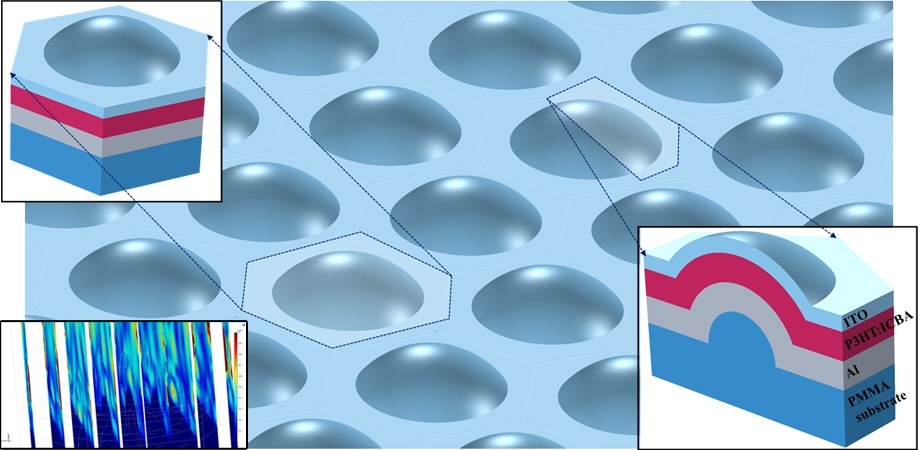In a world where renewable energy is increasingly taking center stage, improving the efficiency of solar technologies is vital. Organic photovoltaic cells offer a flexible and economical option compared to their silicon counterparts, but honing their efficiency is an ongoing challenge. A groundbreaking study from Abdullah Gül University in Turkey proposes an innovative approach: an organic solar cell that adopts a hemispherical shell shape to maximize light absorption and angular coverage.
A step forward in photovoltaic technology
The research, published in the Journal of Photonics for Energy (I link it to you here), highlights how the hemispherical shape of the organic photovoltaic cell can represent a turning point in energy efficiency. The hemispherical shell shape, thanks to its ability to capture light from different angles, promises to significantly improve light absorption and extend the angular coverage of solar cells.

Professor Dooyoung Hah, first author of the research, briefly describes its trajectory. Through three-dimensional analysis using finite element analysis (FEA), he highlighted how the hemispherical shell structure increases light absorption by 66% compared to flat structures for transversely polarized electric (TE) light and by 36% for transversely polarized magnetic (TM) light. A truly remarkable advance!
Hemispherical shape: advantages and future applications
In addition to its exceptional absorption capabilities, the hemispherical structure offers extended angular coverage. In numbers? It extends up to 81 degrees for TE polarization and 82 degrees for TM polarization. An advantage for applications that require flexible light capture, such as wearable electronics.
With the improved characteristics of absorption and omnidirectionality, the hemispherical shell-shaped active layers will be advantageous in various application areas of organic solar cells.
Dooyoung Hah
In short (Italian only)
This research highlights how creative engineering approaches can lead to tangible improvements in the efficiency and applicability of photovoltaic technologies. The hemispherical shell shape marks a significant advancement in the design of organic solar cells.
Harnessing the power of finite element analysis and innovative structural engineering, this new hemispherical shape paves the way for a brighter, more sustainable future. A future powered by renewable energy.


